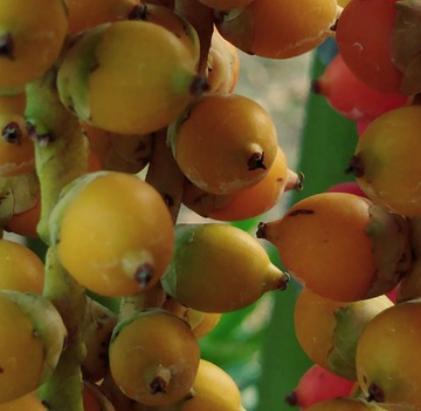- Phytopedia
- NUTS
- Betel Nuts

GEEK TALK
BUT WE TALK
Areca nut, Pāna, Supari (Hin), Paaku, Seeval (Tam)
DID YOU KNOW?
The seeds of the betel nut are chewed as a stimulant and this action has been featured in ancient texts for close to 2,000 years.
The betel nut was a favorite of royalty at certain periods and in Vietnam, the betel nut and betel leaf are symbols of love and marriage. In fact, the Vietnam phrase, “matters of betel and areca,” is synonymous with marriage.
Think of the Betelnut as the predecessor of chewing gum in India. Typically, eaten with the betel leaf after a meal in the form of a paan (with other condiments of choice like cardamom, clove, etc.), it is a major habit that sometimes can degenerate into addiction by mixing chewing tobacco.
Betel nuts are available dried cured and fresh and when growing are surrounded by a green husk.
In early growth, the nut is very soft and can be easily cut with a knife, however as it ripens the fruit hardens to strong and wood-like consistency. As it ripens the husk turns a yellow or orange color as well.
The betel nut, when chewed with betel leaves, works as a mild stimulant said to give a warming sensation and a slightly heightened awareness. However, not all about betel nuts are good as chewing them with betel leaves is a recognized carcinogen.
KITCHEN PHARMACY
- Betel nuts are believed to be beneficial to stroke recovery as well as those suffering from schizophrenia.
- In addition, it helps those suffering from dry mouth.
GEOGRAPHICAL DISTRIBUTION
Typically grown in the tropical Pacific and parts of Asia, betel or areca nut, have remained very popular throughout Asia while not yet enjoying commercial success in America.



